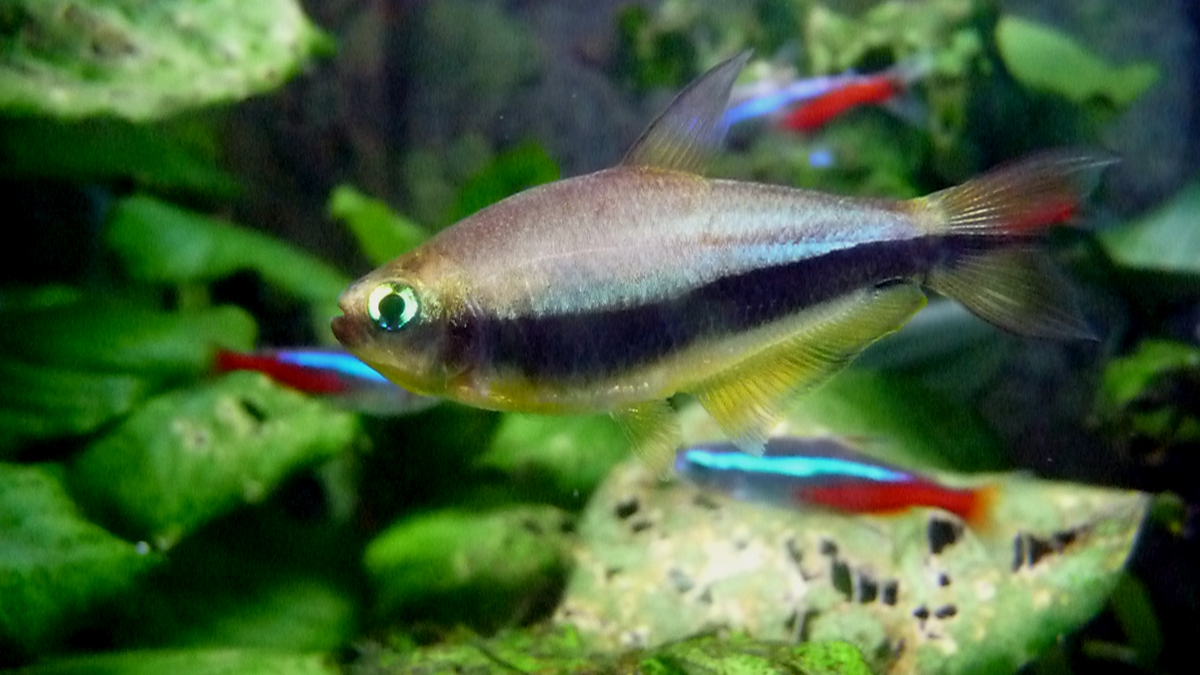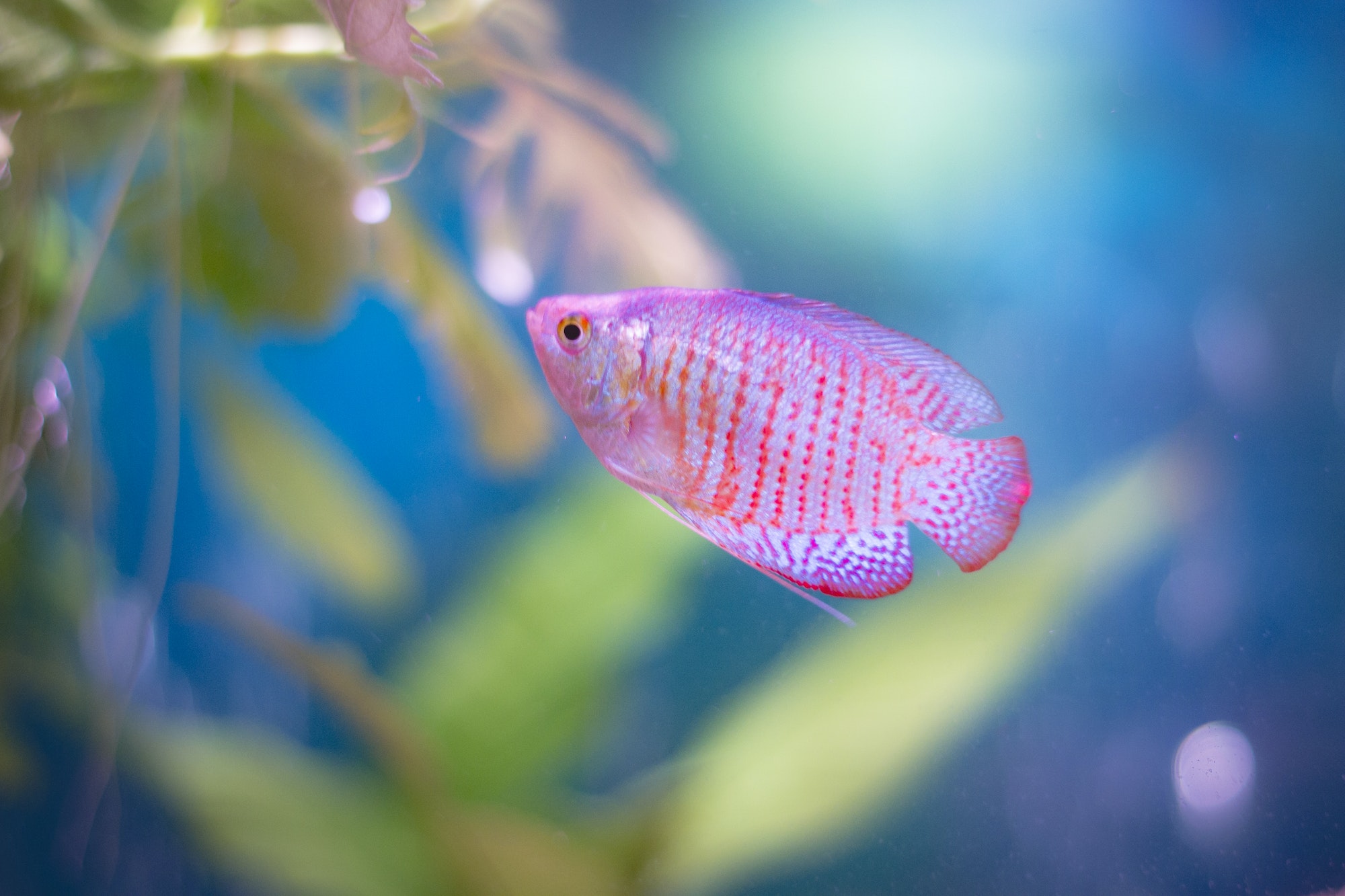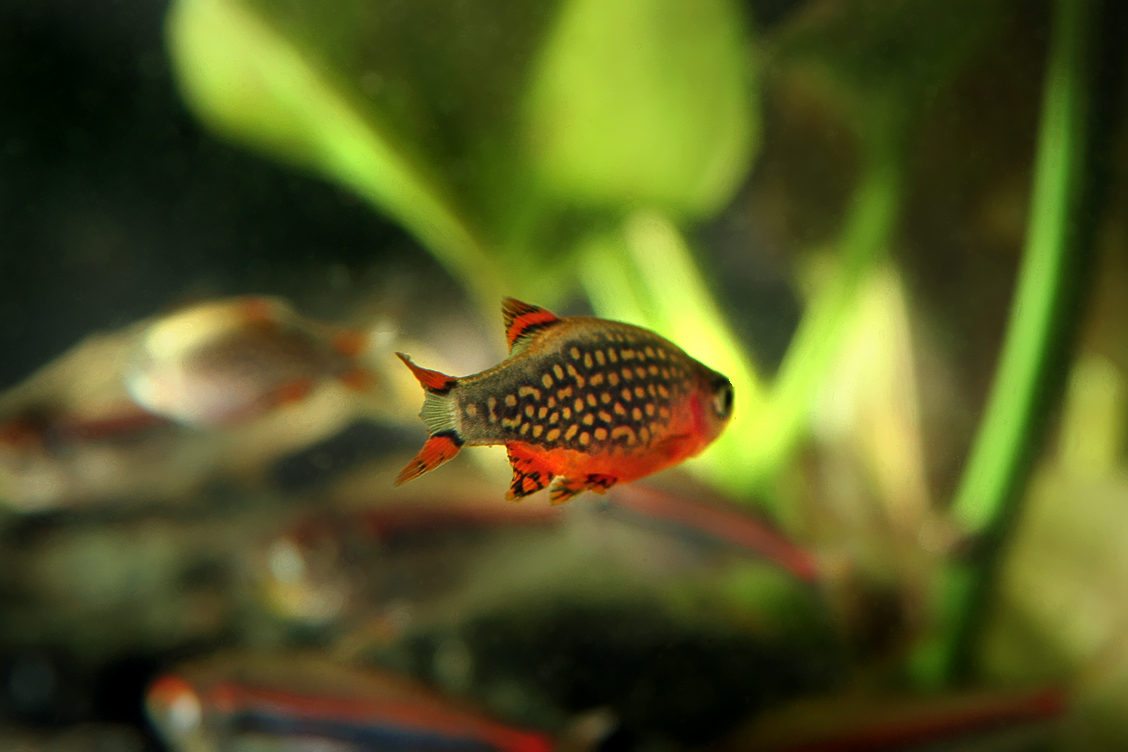In the depths of the aquatic world, a majestic entity enchants the waters with its dazzling colors and irresistible charm. The Emperor Tetra (Nematobrycon palmeri), a priceless treasure among freshwater fish, has won over the hearts of aquarium enthusiasts across the globe. Mesmerizing with its shimmering scales and unparalleled splendor, this modest creature demands awe and reverence from every onlooker.
Table of Contents
Hailing from the family Characidae, the Emperor Tetra finds its roots in the pristine waters of Colombia, particularly in the Atrato and San Juan River basins. This enchanting species shares its lineage with other remarkable fish, such as the closely related Nematobrycon lacortei and the more distant relative, the Neon Tetra.
The Emperor Tetra’s scientific name, Nematobrycon palmeri, pays homage to its discoverer, Dr. Chas H. T. Palmer, who first described the species in 1938. However, in the aquarium trade, this regal fish is known by various monikers, including the Marble Tetra, King Tetra, and Black Emperor Tetra, each name a testament to its majestic appearance and commanding presence.
As a mid-dwelling species, the Emperor Tetra thrives in the middle layers of the aquarium, gracefully navigating through the water column. With a peaceful temperament and a penchant for schooling, these fish create a mesmerizing display as they swim in unison, their iridescent scales catching the light and casting a hypnotic spell upon onlookers.
In their natural habitat, Emperor Tetras find solace in the slow-moving, tannin-stained waters of the Colombian rainforests. These waterways, rich in decomposing plant matter, create a unique environment that these fish have adapted to over countless generations. To recreate this ambiance in the home aquarium, hobbyists often employ driftwood and dried leaves, fostering a natural and comfortable setting for these regal creatures.
When it comes to dietary preferences, the Emperor Tetra is a versatile epicure, readily accepting a variety of foods. Flakes, pellets, and frozen or live foods such as daphnia, artemia, and bloodworms are all welcomed with enthusiasm. However, it is essential to provide a well-balanced diet to ensure optimal health and vitality.
Intriguingly, a research journal published in the esteemed “Ichthyological Exploration of Freshwaters” shed light on the Emperor Tetra’s breeding behavior. The study revealed that these fish are substrate spawners, meticulously attaching their eggs to plants or other surfaces within the aquarium. The males, resplendent in their vibrant colors, engage in a captivating dance to attract potential mates, showcasing their fins and shimmering scales in a mesmerizing display of courtship.
As we delve deeper into the world of the Emperor Tetra, fascinating facts emerge that further enhance our appreciation for this magnificent species. Did you know that the Emperor Tetra is known to be a relatively long-lived fish, with some individuals reported to have survived for up to 5 years in captivity? This longevity is a testament to their resilience and adaptability, traits that have endeared them to aquarium enthusiasts for decades.
In the realm of aquaristics, the Emperor Tetra has carved a special place for itself. Its striking appearance, peaceful nature, and adaptability have made it a favored choice among both novice and experienced hobbyists alike. The presence of an Emperor Tetra school within an aquarium adds a touch of regal elegance, transforming the underwater landscape into a living work of art.
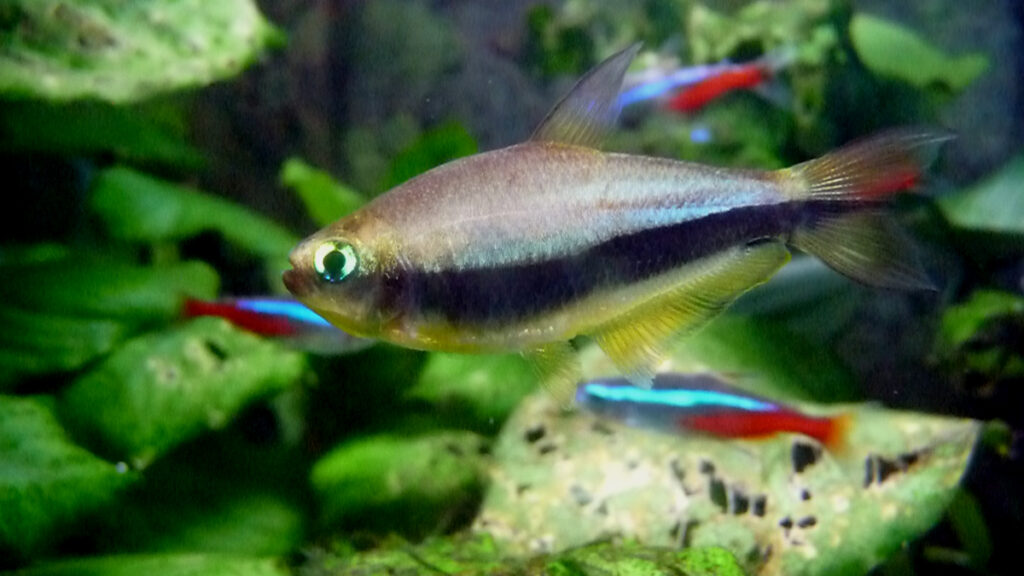
Key Information
The Emperor Tetra (Nematobrycon palmeri) is a stunning freshwater fish that captivates aquarium enthusiasts with its vibrant colors and regal appearance. Males display a striking iridescent blue-purple body with a prominent black stripe extending from the eye to the caudal fin, while females exhibit a more subdued coloration with a golden sheen and less distinct black markings. The fins of both sexes are adorned with hues of blue, black, and white, creating a mesmerizing display as they gracefully swim through the water.
| Family | Characidae |
| Origin | Colombia (Atrato and San Juan River basins) |
| Price | Moderate |
| Common Names | Emperor Tetra, Black Emperor Tetra, King Tetra, Marble Tetra |
| Variants | None |
| Ideal Tank Size | 20 gallons or larger |
| Water Parameters | Temperature: 72-79°F (22-26°C), pH: 5.5-7.5, Hardness: 2-15 dGH |
| Lifespan | 3-5 years |
| Full Size | 1.5-2 inches (4-5 cm) |
| Natural Environment | Slow-moving, tannin-stained waters in Colombian rainforests |
| Behavior | Peaceful, schooling fish |
| Habitat Preference | Mid-level dweller, prefers planted tanks with open swimming areas |
| Aquarium Decoration | Driftwood, dried leaves, and live plants (e.g., Java Fern, Amazon Sword) |
| Ideal Tank Mates | Other peaceful, similarly-sized fish (e.g., Harlequin Rasboras, Neon Tetras) |
| Fish to Avoid | Large, aggressive fish that may bully or eat them |
| Best Foods/Diet | Omnivorous; accepts flakes, pellets, and frozen/live foods (e.g., daphnia, artemia, bloodworms) |
| Disease | Susceptible to common freshwater fish diseases if water quality is poor |
| Sex-Switch | No |
| Gender Differences | Males are more colorful with prominent black markings; females are duller with a golden sheen |
| Care Level | Easy |
| Breeding Level | Moderate; substrate spawners that attach eggs to plants or decorations |
Ideal Tank Mates
To create an optimal environment for the Emperor Tetra (Nematobrycon palmeri), it is vital to carefully choose tank mates that share similar water conditions, behaviors, and habitat needs. This friendly and sociable fish thrives in a well-planted tank with plenty of room to swim and a moderate water flow. Establishing compatibility is crucial for fostering a peaceful and harmonious setting that benefits all the fish involved.
Ideal tank mates for Emperor Tetras should be non-aggressive, similarly sized, and adapted to the same water conditions. It’s crucial to avoid large, boisterous fish that may intimidate or prey upon the smaller, more delicate Emperor Tetras. By carefully selecting compatible species, you can create a visually stunning and well-balanced aquatic community.
Here are 15 ideal tank mates for Emperor Tetras, along with explanations for their compatibility:
1. Neon Tetras (Paracheirodon innesi)
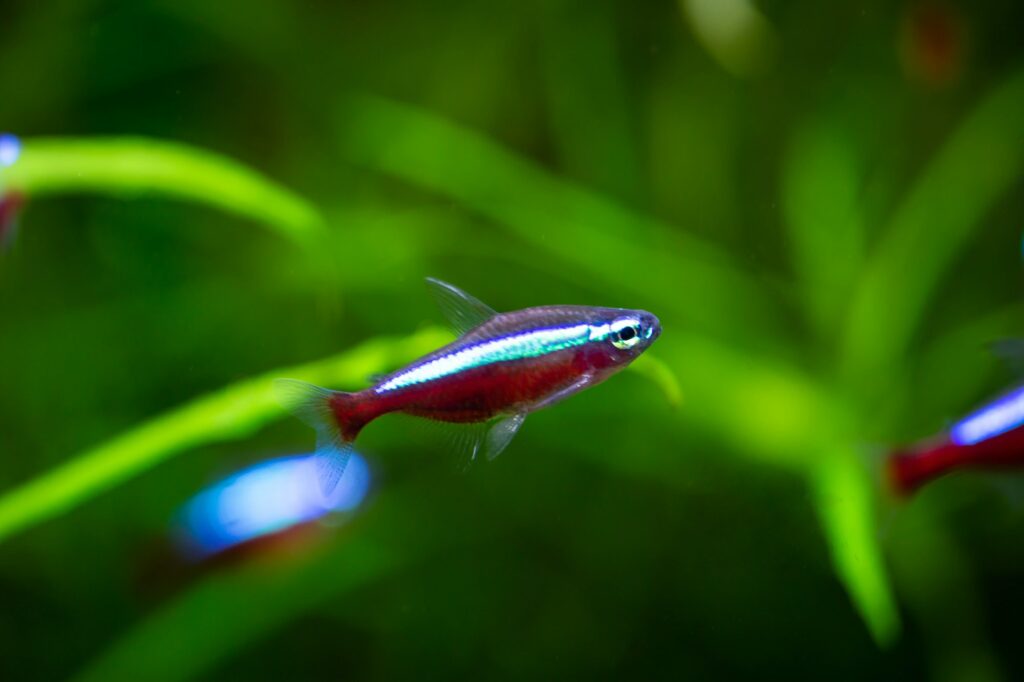
Neon Tetras are a classic choice for community tanks, and their small size, peaceful nature, and vibrant colors make them an excellent companion for Emperor Tetras. Both species share similar water preferences and enjoy the safety of schooling.
2. Rummy Nose Tetras (Hemigrammus rhodostomus)
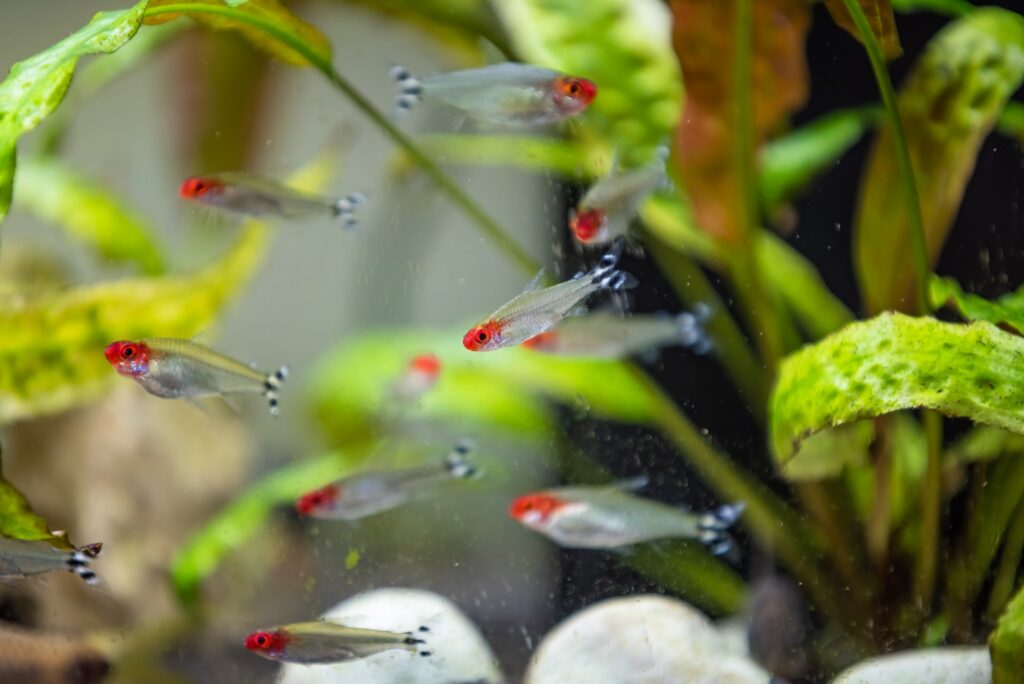
Rummy Nose Tetras are another peaceful, schooling fish that can coexist harmoniously with Emperor Tetras. Their unique coloration and active swimming behavior add visual interest to the aquarium.
3. Cardinal Tetras (Paracheirodon axelrodi)
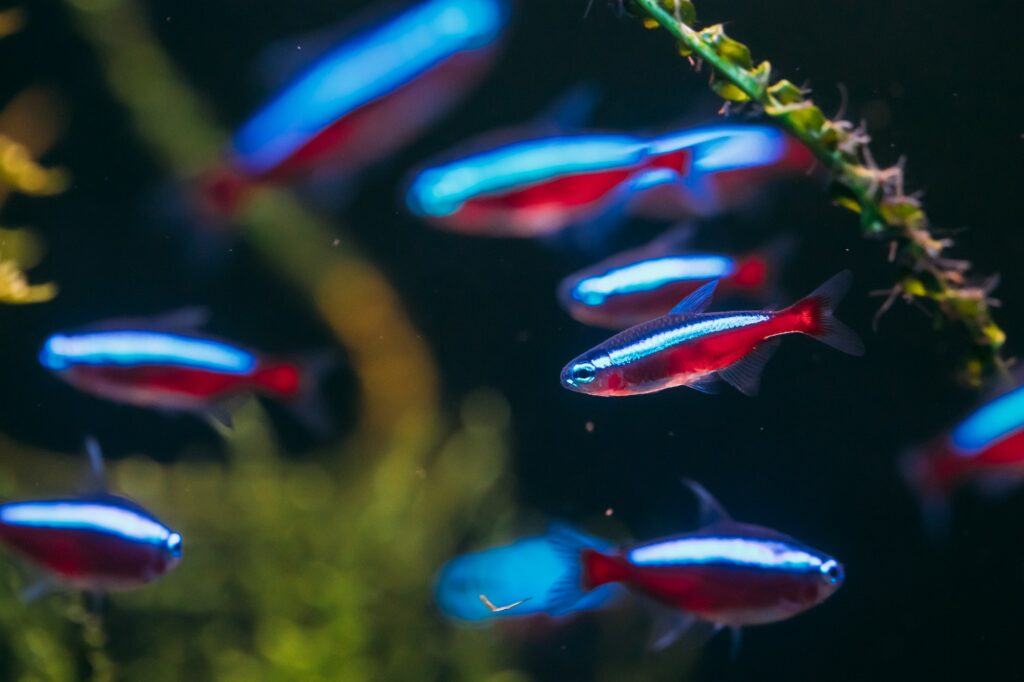
Like Neon Tetras, Cardinal Tetras are small, colorful, and peaceful, making them an ideal tank mate for Emperor Tetras. They share similar water requirements and contribute to a visually stunning display when schooling together.
4. Harlequin Rasboras (Trigonostigma heteromorpha)

Harlequin Rasboras are a peaceful, schooling fish that adapt well to the same water conditions as Emperor Tetras. Their unique triangular shape and vibrant coloration add diversity to the aquarium.
5. Ember Tetras (Hyphessobrycon amandae)
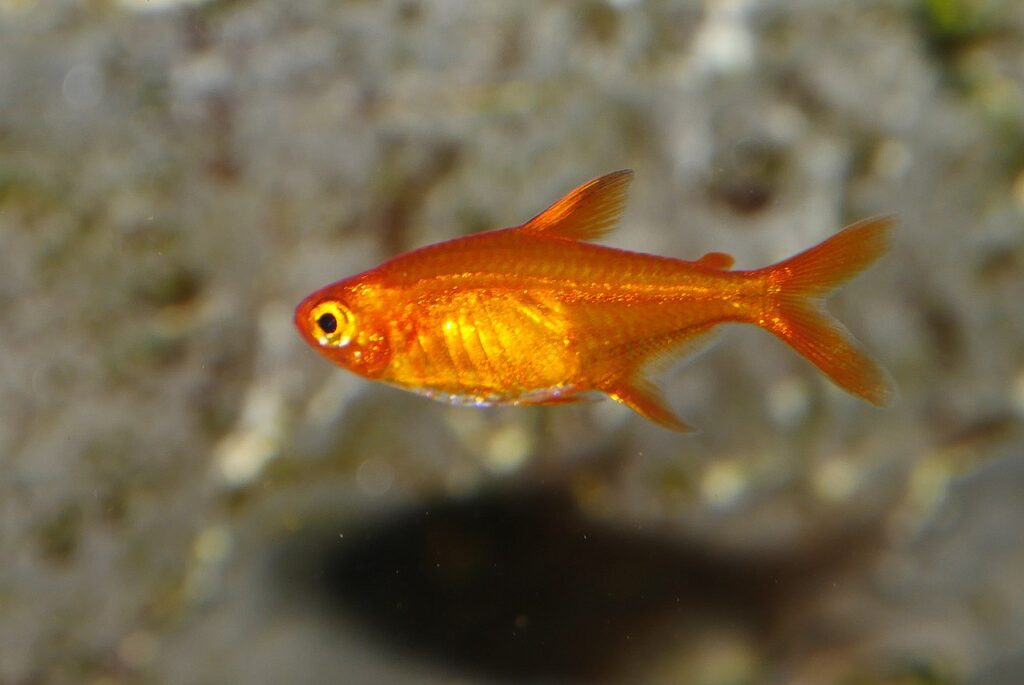
Ember Tetras are small, peaceful, and vividly colored, making them an attractive addition to a community tank with Emperor Tetras. They share similar water preferences and contribute to a visually appealing display.
6. Corydoras Catfish (Corydoras spp.)
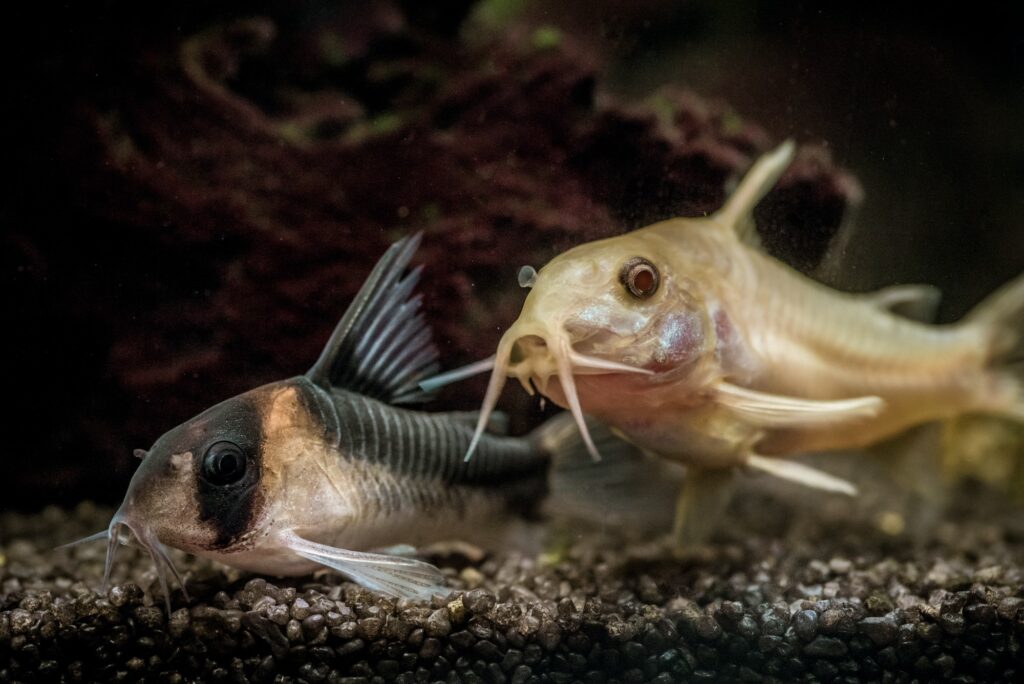
Corydoras Catfish are peaceful bottom-dwellers that help maintain a clean aquarium substrate. Their gentle nature and unique appearance make them a great companion for Emperor Tetras, as they occupy different levels of the tank.
7. Kuhli Loaches (Pangio kuhlii)
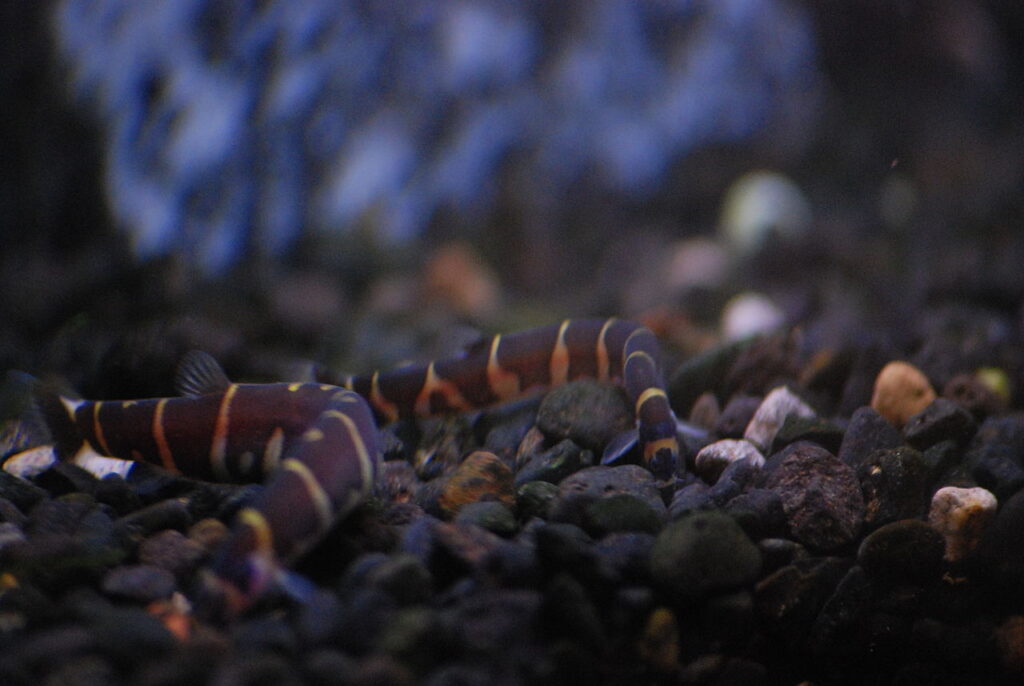
Kuhli Loaches are nocturnal, eel-like fish that peacefully scavenge the substrate for leftover food. Their unique appearance and behavior add interest to the aquarium without disturbing the Emperor Tetras.
8. Cherry Barbs (Puntius titteya)
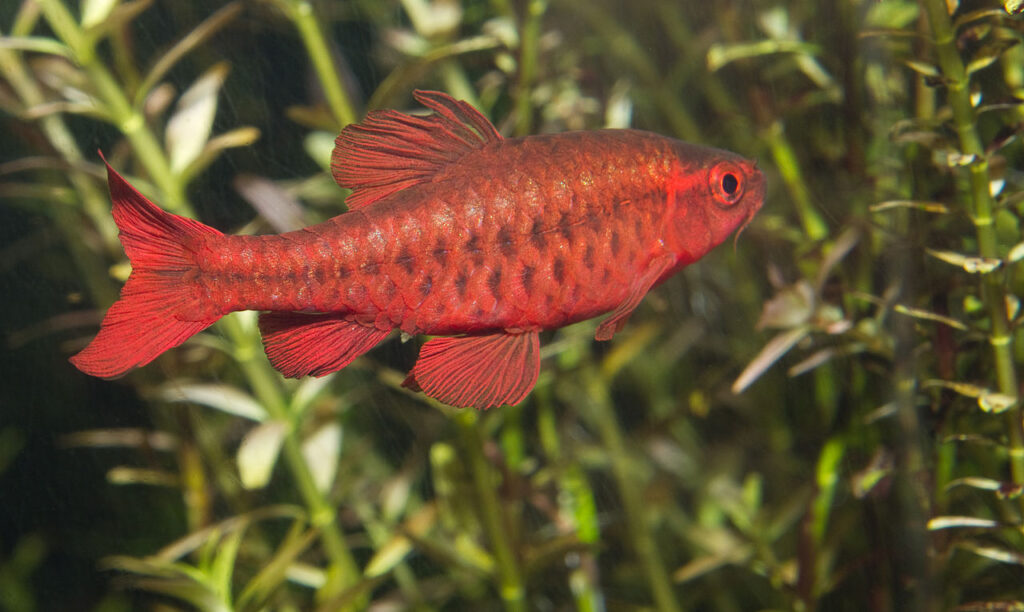
Cherry Barbs are small, peaceful, and colorful fish that thrive in similar water conditions as Emperor Tetras. Their active swimming behavior and schooling nature create an engaging display.
9. White Cloud Mountain Minnows (Tanichthys albonubes)
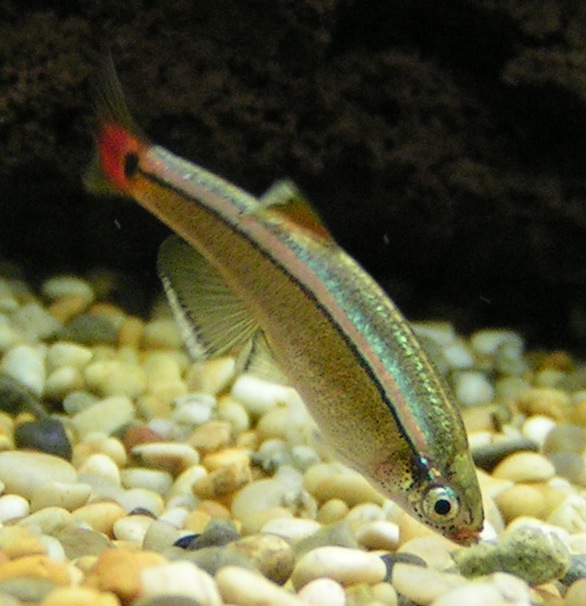
White Cloud Mountain Minnows are hardy, peaceful, and adaptable fish that can coexist well with Emperor Tetras. Their active swimming behavior and attractive coloration make them a popular choice for community tanks.
10. Dwarf Gouramis (Trichogaster lalius)
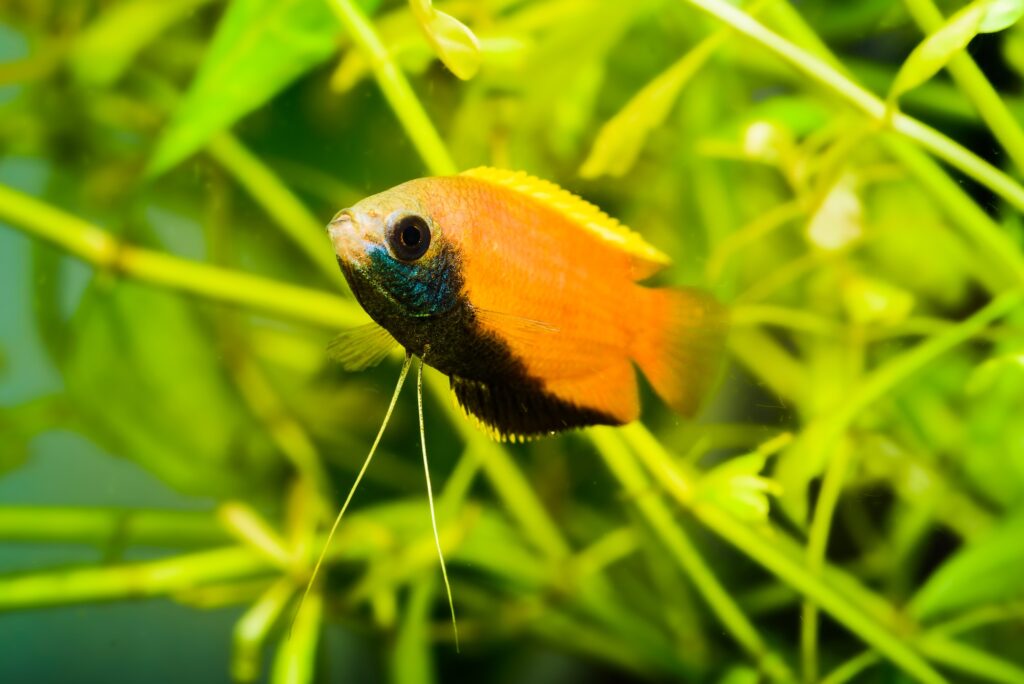
Dwarf Gouramis are peaceful, colorful, and relatively small labyrinth fish that can be kept with Emperor Tetras. As long as there is ample swimming space and hiding spots, these two species can coexist harmoniously.
11. Otocinclus Catfish (Otocinclus spp.)
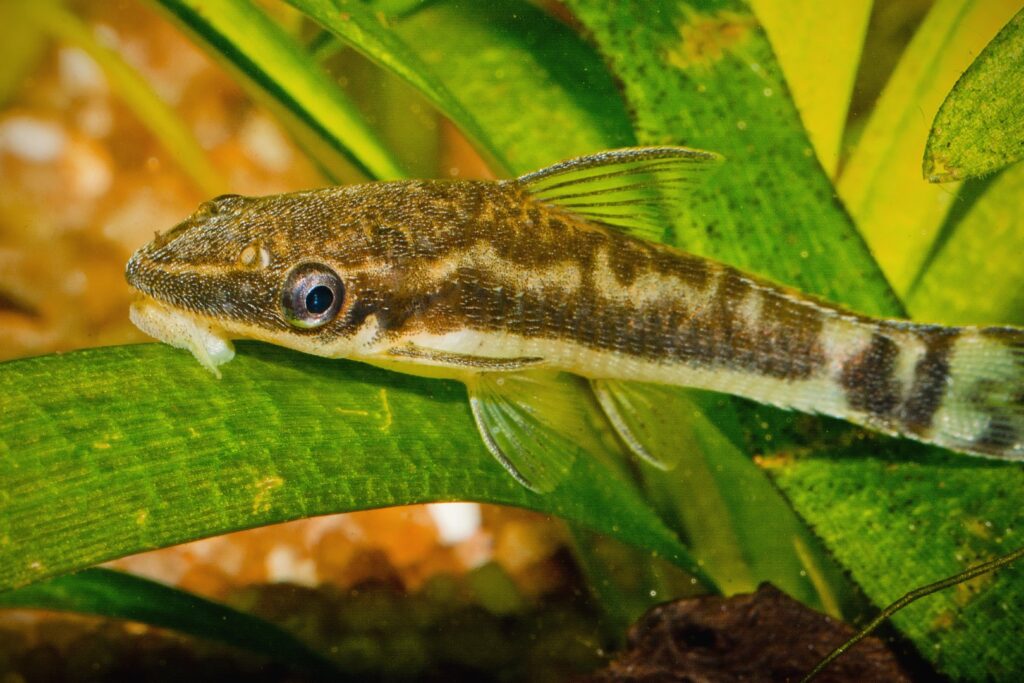
Otocinclus Catfish are small, peaceful algae eaters that help maintain a clean aquarium. Their gentle nature and unique appearance make them an ideal tank mate for Emperor Tetras, as they occupy different niches within the tank.
12. Celestial Pearl Danios (Danio margaritatus)
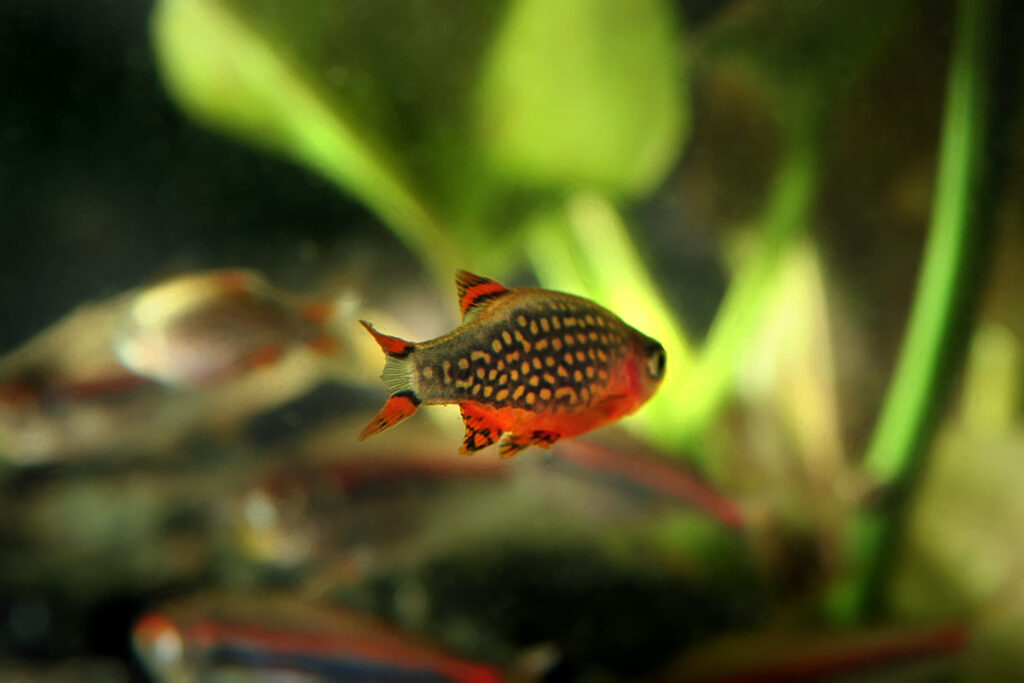
Celestial Pearl Danios, also known as Galaxy Rasboras, are small, peaceful, and strikingly patterned fish that share similar water preferences with Emperor Tetras. Their unique appearance adds visual diversity to the aquarium.
13. Dwarf Corydoras (Corydoras pygmaeus)
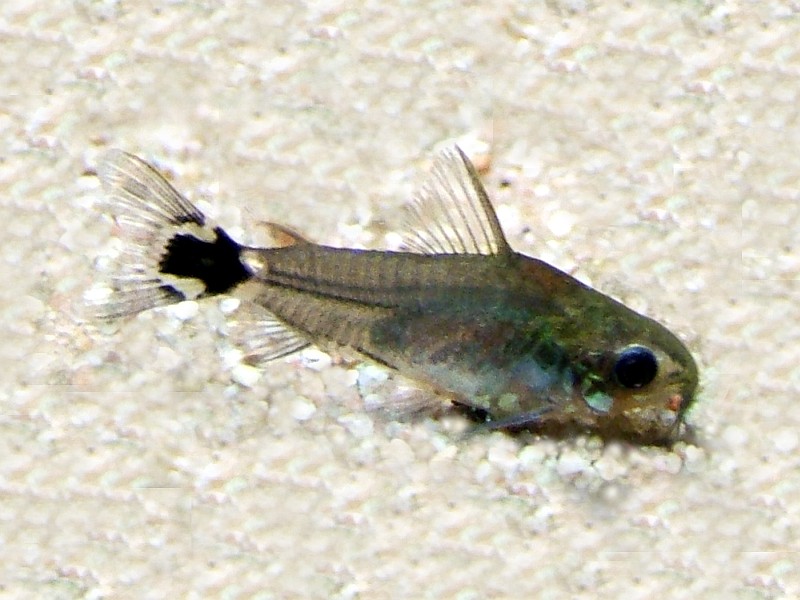
Dwarf Corydoras are miniature versions of the popular Corydoras Catfish, making them an excellent choice for smaller aquariums housing Emperor Tetras. Their peaceful nature and substrate-cleaning habits benefit the overall tank health.
14. Lambchop Rasboras (Trigonostigma espei)
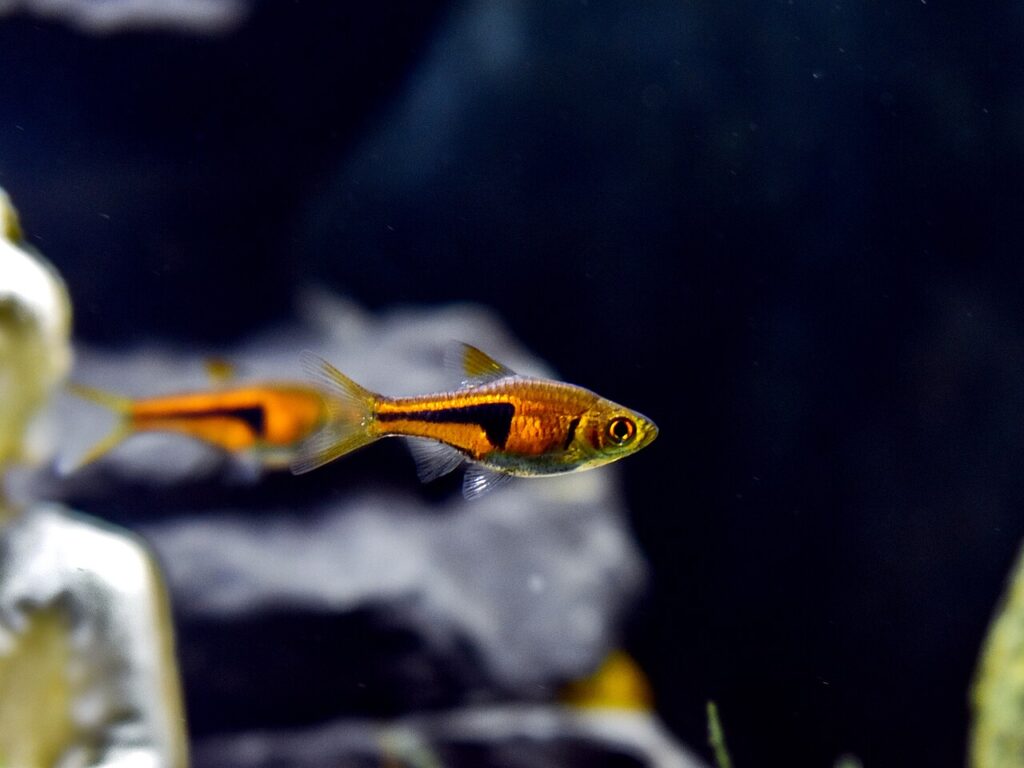
Lambchop Rasboras are peaceful, schooling fish with a unique triangular shape and attractive coloration. They adapt well to the same water conditions as Emperor Tetras and add visual interest to the aquarium.
15. Endler’s Livebearers (Poecilia wingei)
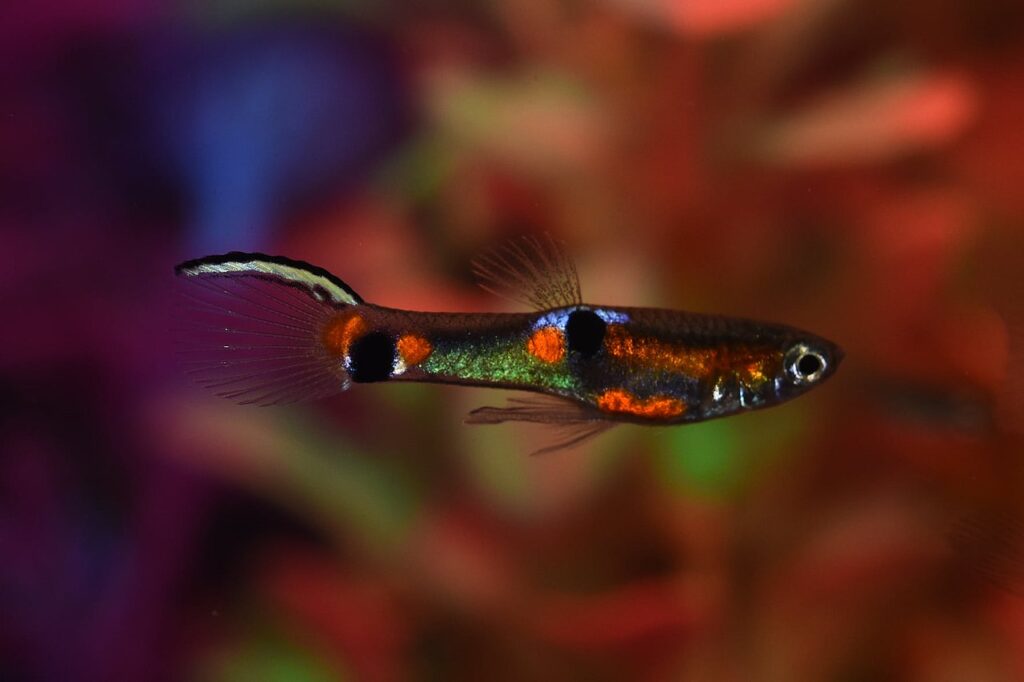
Endler’s Livebearers are small, colorful, and peaceful fish that can coexist well with Emperor Tetras. Their active swimming behavior and vibrant colors create an engaging display in the aquarium.
FAQs
How many Emperor Tetras should I keep together?
Emperor Tetras are schooling fish and feel most comfortable when kept in groups of at least six individuals. Keeping them in larger numbers helps reduce stress and encourages natural schooling behavior, creating a more visually appealing display in your aquarium.
Are Emperor Tetras easy to breed?
Breeding Emperor Tetras can be somewhat challenging, as they are substrate spawners that require specific water conditions and a well-maintained aquarium. Providing a separate breeding tank with fine-leaved plants, such as Java Moss, can help facilitate spawning. Removing the adult fish after spawning is essential to prevent them from eating the eggs.
How often should I feed my Emperor Tetras?
Feed your Emperor Tetras small portions of food two to three times a day. Offering a varied diet that includes high-quality flakes, pellets, and frozen or live foods like daphnia, artemia, and bloodworms will ensure they receive the necessary nutrients for optimal health and coloration.
Can Emperor Tetras be kept with shrimp or snails?
Emperor Tetras are generally peaceful and can coexist with small, non-aggressive invertebrates like cherry shrimp or nerite snails. However, it’s essential to provide ample hiding spots and vegetation for the shrimp and snails to minimize any potential stress or predation.
Do Emperor Tetras jump out of the aquarium?
While Emperor Tetras are not known for being frequent jumpers, it’s always a good idea to keep your aquarium covered with a tight-fitting lid. This precaution will prevent any potential escapes and protect your fish from accidentally jumping out of the tank.
How often should I perform water changes for my Emperor Tetra tank?
Perform weekly water changes of about 10-20% of the tank volume to maintain good water quality. Regular water changes help remove accumulated waste, replenish essential minerals, and keep your Emperor Tetras healthy. Be sure to use a water conditioner to remove harmful chlorine and chloramine from tap water before adding it to the aquarium.
Can Emperor Tetras be kept in a planted tank?
Absolutely! Emperor Tetras are an excellent choice for planted aquariums. They appreciate the natural cover and hiding spots provided by live plants, which help them feel secure and reduce stress. Plants like Java Fern, Amazon Sword, and Anubias are well-suited for Emperor Tetra tanks, as they can tolerate the lower light conditions and slightly acidic water that these fish prefer.
How can I tell if my Emperor Tetras are healthy?
Healthy Emperor Tetras should have vibrant colors, clear eyes, and a well-rounded body shape. They should be active swimmers, displaying their natural schooling behavior and readily accepting food during feeding times. Signs of illness may include lethargy, loss of appetite, visible wounds or abnormalities, and unusual swimming patterns. If you notice any of these symptoms, consult a veterinarian or an experienced aquarium hobbyist for guidance.

